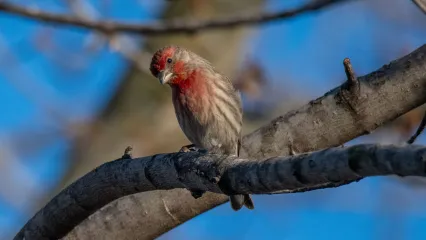
Description
A robin- sized woodpecker with an entirely red head. The color of the back is entirely black with contrasting white plumage on the chest, belly and rump. The wings are also black with a bold, contrasting white patch that is visible in flight. The males and females look alike. Red-headed woodpeckers are most often confused with the red-bellied woodpecker, which lacks the bold white plumage on its breast, wings and rump. Also, the red-bellied woodpecker has red plumage only on the top and/or back of the head.
Size
7.5-9 inches in length. 16.5 inch wingspan.
Habitat
Red-headed woodpeckers Occur in mature oak woodlands, orchards and riparian woodlands along creeks and around ponds. They are uncommon in urban or residential neighborhoods. During winter, they are found across the eastern ¾ of the main body of the state. The number of woodpeckers that winter in Oklahoma varies greatly from year to year depending upon acorn production and weather. In the summer months, this species can be found statewide.
Life Cycle
At bird feeders they eat suet, miracle meal, raisins and black-oil sunflower seeds. Away from feeders they eat insects, fruit and especially nuts such as acorns.
How To Observe
Red-headed woodpeckers typically forage alone or in small groups in mature trees. During winter, they are often found in nut-bearing trees such as oaks and hickories.


